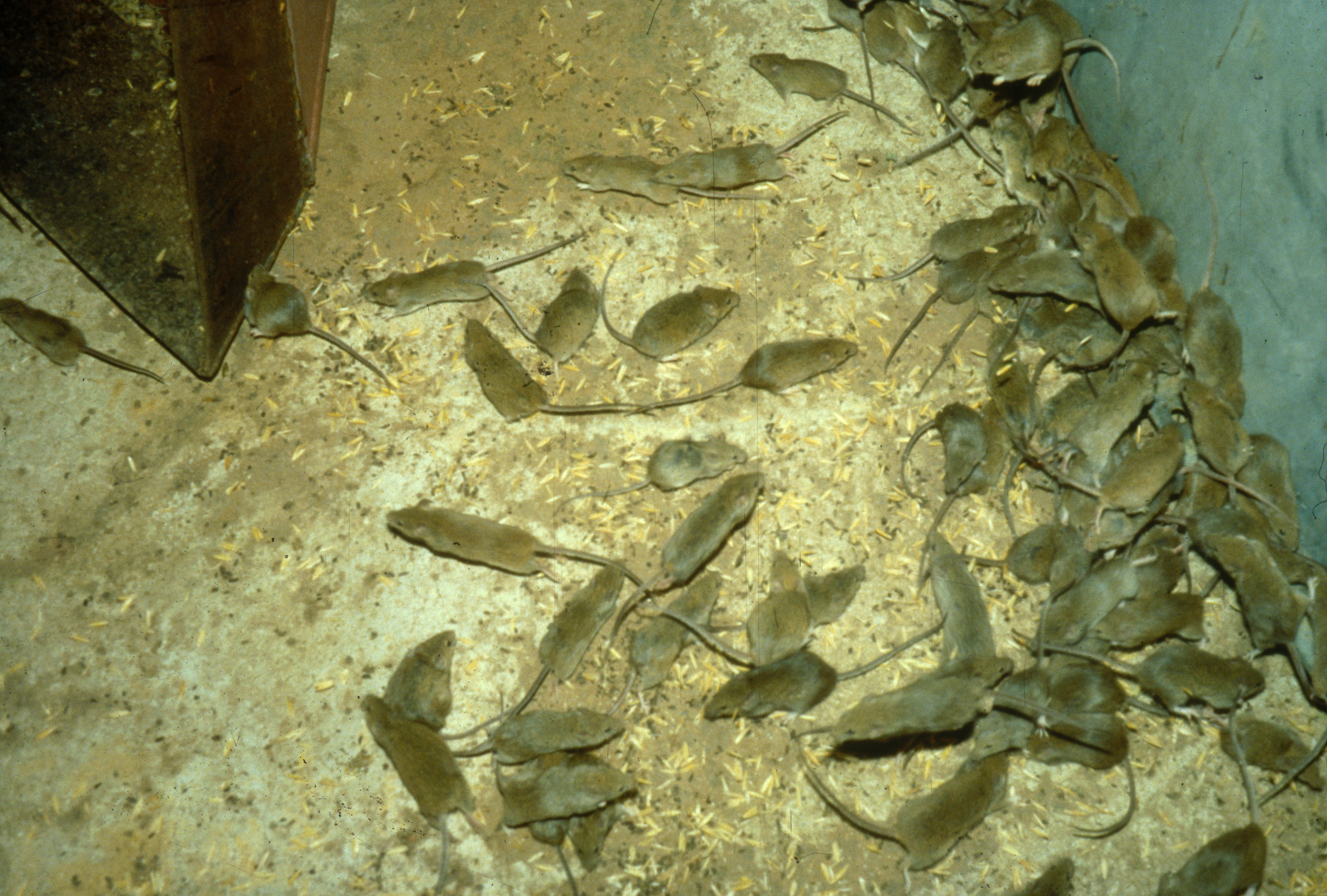
Application of new genomic approaches
Application of new genomic approaches to improve management of mouse plagues.
Invasive house mice (Mus musculus spp.) are notable in Australia for aperiodic eruptions in population numbers that can lead to ‘mouse plagues’ that disrupt ecosystems, cause significant damage to agriculture and other economic enterprise, and pose health threats to domesticated animals and humans. Effective mitigation of rodent pest impacts depends crucially on knowledge of pest population structure, source/sink dynamics, and landscape permeability to pest movement. Advances in DNA sequencing techniques have made it possible to efficiently survey population genetic variation at thousands of positions in the genome, enabling the resolution of fine-scale population genetic structure and gene flow, estimation of effective population sizes, and may also yield insights concerning potential functional genetic variation.
In this project, we are utilising high-throughput genotyping of single-nucleotide polymorphisms (SNPs) from mice sampled across grain-growing regions in Australia. The goals are to (1) develop new customised genotyping techniques for rapid and precise inference of population structure, (2) evaluate the role of environmental features in facilitating or inhibiting movement of mouse populations across landscapes, and (3) integrate genetic analyses into the next generation of mouse plague forecasting models.
Funding: Grains Research & Development Corporation (GRDC)
Partners: Commonwealth Scientific and Industrial Research Organisation (CSIRO)
Contact: Dr Kevin Oh